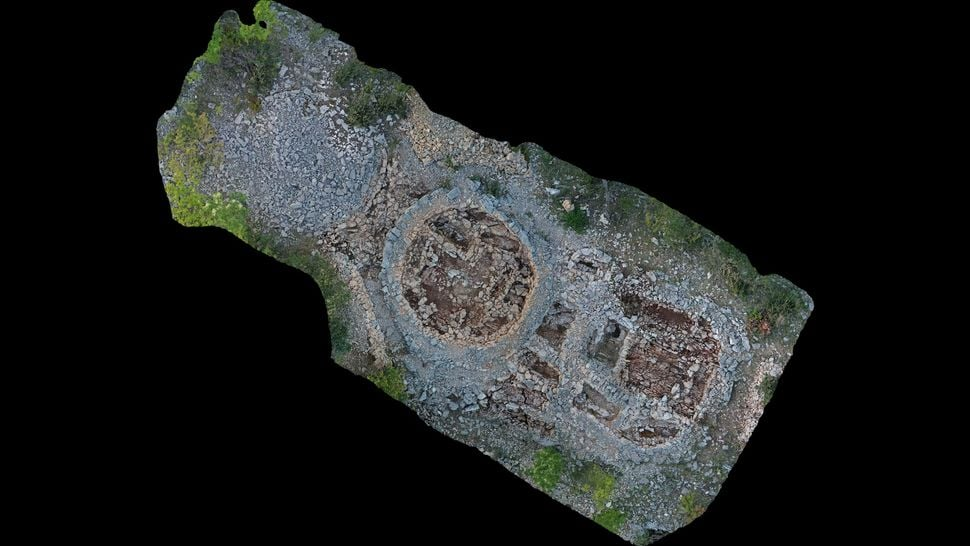Archaeologists in Croatia have unearthed a 2,500-year-old metal helmet within an Illyrian burial mound, which may have been a votive offering or part of a religious practice.
The helmet was found in a stone structure within a burial mound at the archaeological site of Gomil. It dates back to the late 6th century BC and the early 4th century BC, as reported by Hrvoje Potrebica, a professor of archaeology at the University of Zagreb who leads the excavation.
Gomil: A Site with Many Burial Mounds The site of Gomil has many burial mounds and is located near the village of Zakotorac, on the Pelješac peninsula near the Adriatic Sea. "Each mound contains multiple graves, and each grave contains multiple burials," said Potrebica.
This 3D model shows the burial mound where the helmet was discovered by archaeologists. (Photo: Miroslav Vuković)
According to ancient Greek records, a people whom the Greeks called Illyrians thrived in the area during the time the helmet was made. The Illyrians were divided into various tribes and kingdoms and were gradually conquered by the Romans in a series of wars that took place between 229 and 168 BC.
Although the newly discovered helmet must undergo a conservation process, "it appears to be in perfect condition," said Potrebica. "The stone structure that holds the helmet is distinct from all the tombs in the burial monument, which suggests that it was intended as a votive offering to deceased ancestors or part of a religious practice related to the entire mound and not a specific individual or tomb," added Potrebica.
The Psychological Impact of the Helmet If the newly discovered helmet was used in battle, it might have had a psychological impact on the enemy, according to Domagoj Perkić, director of the Archaeological Museum, which is part of the Museums of Dubrovnik, and a researcher involved in the excavation. "Imagine a warrior with a gleaming helmet on his head, in the sun, on the eve of a battle… the mere sight of it would inspire awe in the enemy."
In 2020, archaeologists discovered another helmet in a stone structure in a nearby burial mound, reported Potrebica. Like the helmet found now, it was probably not intended for any individual or tomb.
The Center for Prehistoric Research in Zagreb, where Potrebica is the director, coordinates research in the Gomil area and collaborates with scientists from the Museums of Dubrovnik and the Institute of Archaeology in Croatia.








